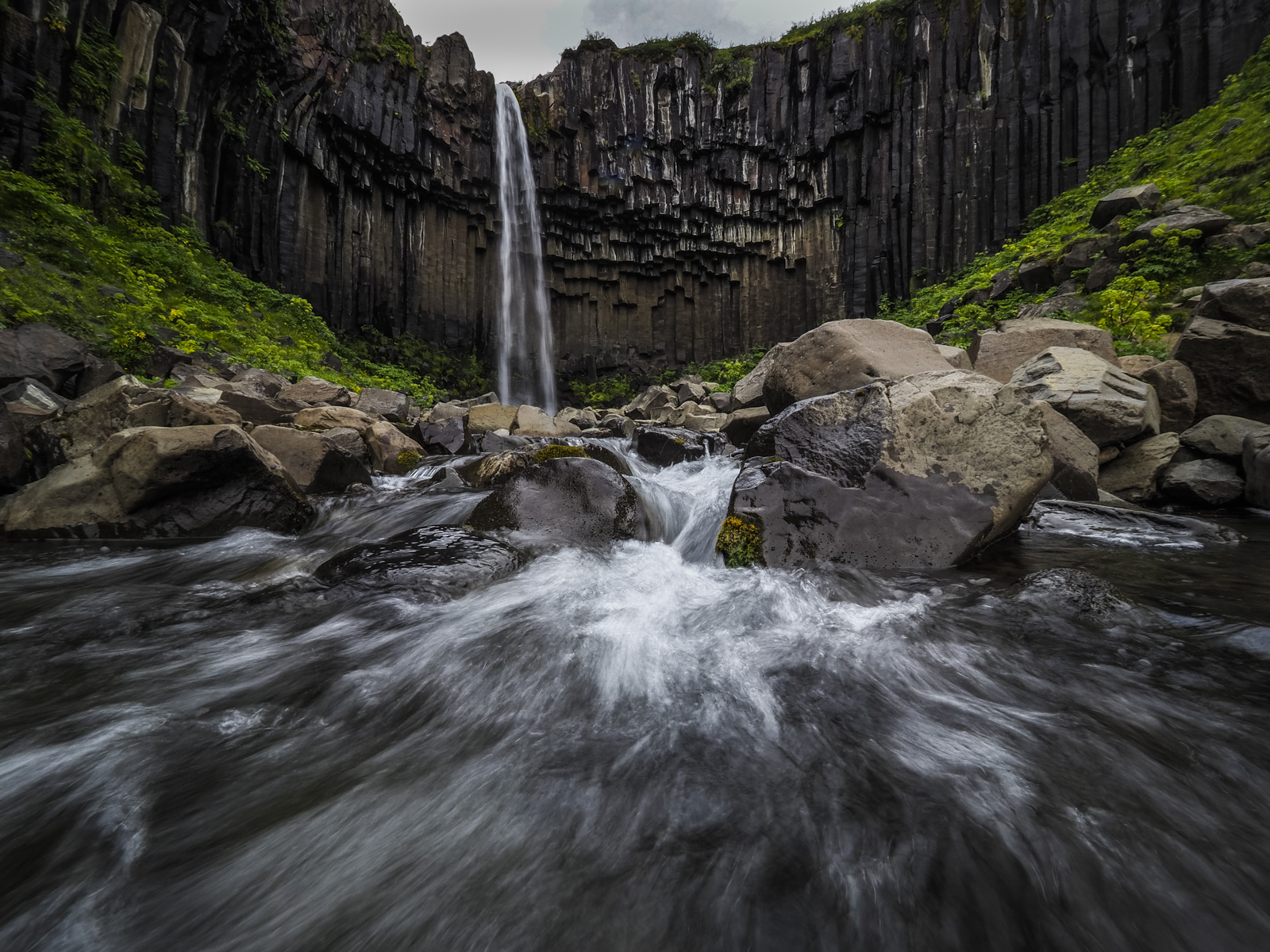Field report Olympus E-M1 Mark II
It has been a great honour when Olympus asked me this summer – as one of the only few first photographers worldwide – to test and shoot with their new flagship, the E-M1 Mark II.
My requirements
Due to my passion for remote areas and active volcanoes I place high demands on my equipment. It must be compact, lightweight and always at hand also while mountaineering. Absolutely essential because of hot and acid gases, wetness, coldness and fine ashes is a robust construction.
That’s why I wanted to push the new M1 Mark II to its limits and did choose the Mont Blanc area and Iceland as photographic destinations.
Please note while reading that I am no „tech guy“ which means my main interest is to shoot fantastic pictures. The message of a photo is more important to me than 100 % technical perfection.
And I was shooting with a pre-series model with beta firmware and some restrictions.
Mobility
First I took the camera to the Mont Blanc area to do some mountaineering. The body only slightly has changed whit the effect of an improved grip compared to the “old” M1. Fits perfect in my hands as I never have been using any other camera. And I could wear it under my jacket without any problem while climbing steep rocks, great!
What I really do like is the vari-angle screen. I know there are many Pros and Cons about but for me as a landscape photographer which prefers wide angle pictures it is a great feature. So I am easily able to shoot from the ground, like!
[ngg_images tag_ids=“M1M2_Montblanc“ display_type=“photocrati-nextgen_basic_thumbnails“ override_thumbnail_settings=“1″ thumbnail_width=“130″ thumbnail_height=“130″]
Reliability
Even more important to me is a dustproofed, splash proofed and freeze proofed camera. I did shoot pictures very close to a 100 C degree hot Geyser, no prob. Close-up photos of waterfalls while raining, no prob. Fine ashes, no prob. My M1 Mark II did its job, and did and did and did 🙂
So I decided to really push it to the limits. I placed the M1 Mark II aside a huge muddy puddle, started video caption (Link to it will follow soon), went to my 4WD and drove with about 40 km/h through that puddle. Muddy water were splashing all over the camera, it has been dripping wet – and worked as nothing has happened, amazing – and luckily as Olympus wouldn’t have been very amused about me destroying one of a very few 😉
[ngg_images tag_ids=“M1M2_Matsch“ display_type=“photocrati-nextgen_basic_thumbnails“ override_thumbnail_settings=“1″ thumbnail_width=“130″ thumbnail_height=“130″]
Image Quality
Mobility checked, reliability checked, so let’s talk about Image Quality. Regarding Quality the battery life has been improved. For one thing the battery discharge indicator now displays in percentage and not only with three or four bars. And I now have been able to shoot for about 1 ½ days with one battery instead of one day. For another thing there is a faster charging, I could charge it during a large social media and coffee break.
Speed. The E-M1 Mark II is all about Speed. O.k., not that important to me as my landscapes are not moving too fast. And unfortunately no volcanic eruption occurred during my stay at Iceland. But what is important and I could give a test is the improved AF (Olympus says: “The advanced Dual FAST AF will automatically choose between on-chip phase detection AF, contrast detection AF, or will utilize both phase and contrast detection simultaneously. This system will boast 121 cross-type on-chip phase detection focus points in order to dramatically improve accuracy.”).It indeed is very fast, good at tracking (tested it with swimming ducks) and nearly no failure. Raindrops on the windscreen, flowers in the foreground, horse in the background, erupting Geysers, the sharpness fits.
What I like best is the again improved Image Stabilization (Olympus says: “…with the latest in-body 5-Axis Image Stabilization that compensates for all types of camera shake. An optimized correction algorithm will boast outstanding compensation performance with approximately 5.5 (6.5. when combined with Olympus lenses) shutter speed steps of compensation.” As I remember right it’s about 4 shutter speeds with the M1).
Having been curious as the promises I left the tripod in the car and did some shots at hand. Skogafoss waterfall with 106mm at 1/6s, balancing on wet rocks while taking a picture of Svartifoss waterfall at 1/10s? Nothing blurred!
[ngg_images tag_ids=“M1M2_Wasserfall“ display_type=“photocrati-nextgen_basic_thumbnails“ override_thumbnail_settings=“1″ thumbnail_width=“130″ thumbnail_height=“130″]
The M1 Mark II comes with a new 20.4 megapixel Live MOS sensor with a promise of a higher dynamic range. I wasn’t able to take pictures for comparison with the old M1 but I have the personal impression of indeed an improvement. Pictures of snowy mountains at backlit, of the unbelievable colours of Landmannalaugar, of the contrast of black lava and white snow all are clear and full of details.
[ngg_images tag_ids=“M1M2_Dynamik“ display_type=“photocrati-nextgen_basic_thumbnails“ override_thumbnail_settings=“1″ thumbnail_width=“130″ thumbnail_height=“130″]

